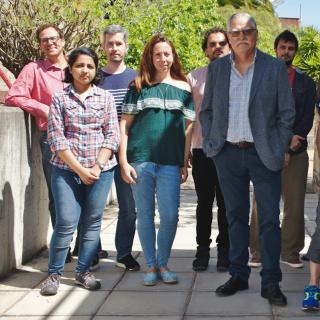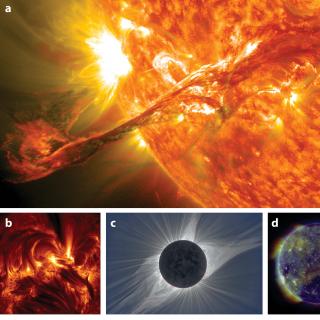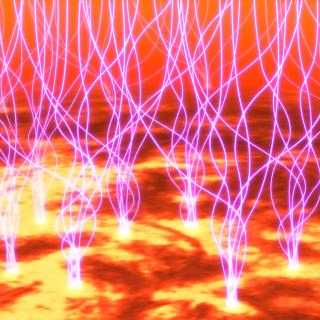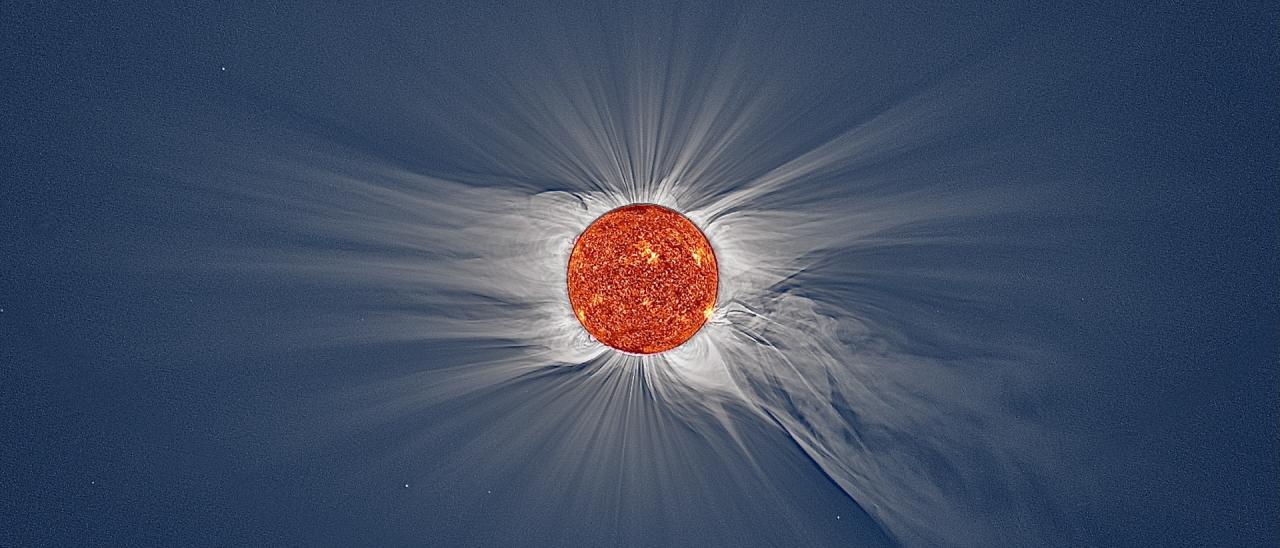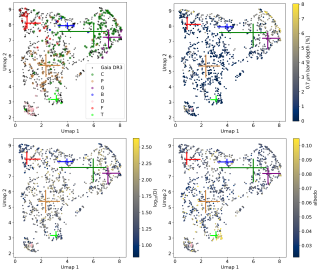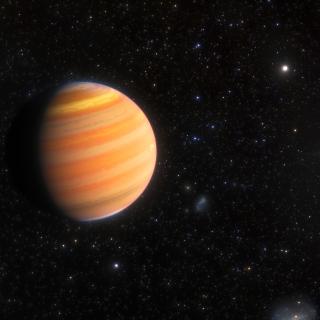The POLMAG research group of the Instituto de Astrofísica de Canarias (IAC) has released the public version of P-CORONA, a novel computer program for calculating the intensity and polarization of the light emitted by the million-degree plasma of the solar corona. This plasma diagnostic technique allows scientists to study the magnetic field of the solar corona by comparing their calculations with observations from the most advanced solar telescopes, such as DKIST and Aditya-L1.
The solar corona is the outermost region of the solar atmosphere, where the explosive events that can seriously affect the Earth’s magnetosphere take place. The plasma of the solar corona is very rarefied, 10 trillion times less dense that the air we breathe, and its maximum brightness in visible light is one million times fainter than that of the solar visible disk. Fortunately, we can see the corona directly not only with the naked eye during a total solar eclipse, but also from space with instruments capable of detecting the coronal radiation emitted at extreme ultraviolet and X-ray wavelengths. The most striking fact about the solar corona is that its temperature reaches more than one million degrees, while the temperature of the plasma in the Sun’s visible surface is only a few thousand degrees.
In solar physics, one of the big scientific challenges is to understand why the solar corona is so hot. It is known that this heating must be related to the magnetic field, thus to solve this enduring mystery requires to “measure” it. To this end, scientists observe the almost invisible light emitted by the atoms of the solar corona in search of the fingerprints caused by the presence of magnetic fields. The magnetic field leaves its fingerprints in the state of polarization of the light, which can be measured with instruments called spectro-polarimeters.
P-CORONA allows scientists to calculate the intensity and polarization of spectral lines in any given three-dimensional model of the solar corona. It takes into account the polarization produced by the scattering of the anisotropic radiation coming from the underlying solar disk, as well as the impact of the magnetic field (through the Hanle and Zeeman effects) and of the solar wind dynamics.
The public version of P-CORONA is one of the milestones of the POLMAG research group, funded by the Advanced Grant that the European Research Council (ERC) awarded to Javier Trujillo Bueno (CSIC Research Professor and IAC Senior Scientist). The members of the group thanks to whom P-CORONA is now a reality are Supriya Hebbur Dayananda, Ángel de Vicente Garrido, Tanausú del Pino Alemán, Nataliia Shchukina, and Javier Trujillo Bueno.
The latest version of P-CORONA and its documentation can be found at https://research.iac.es/proyecto/polmag/pages/codes.php.
P-CORONA is offered to the astrophysical community with the hope that it will be applied to achieve new advances in solar and stellar physics.
This project has received funding from the European Research Council (ERC) under the European Union’s Horizon 2020 research and innovation programme (ERC Advanced Grant agreement No 742265).
